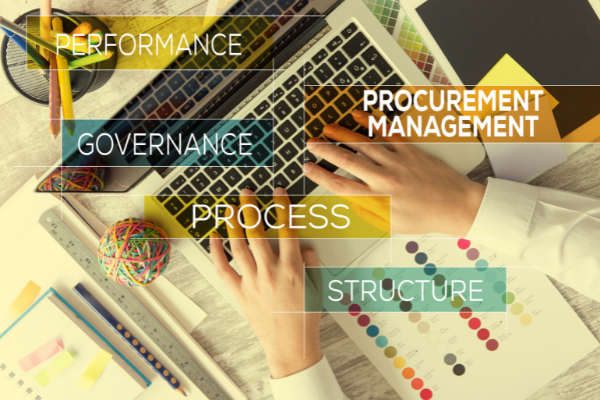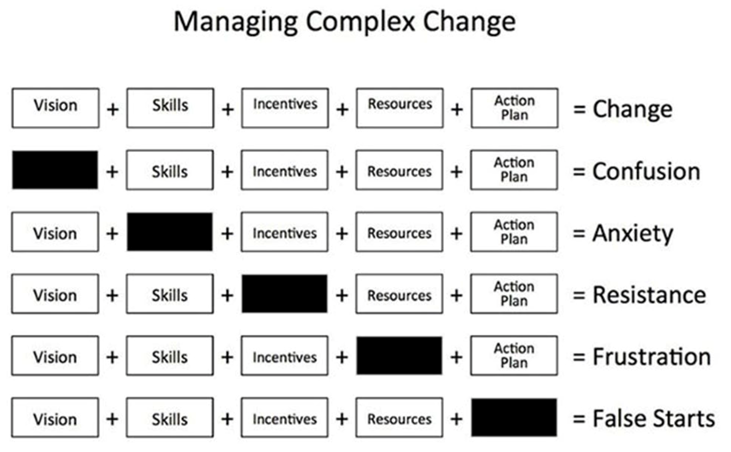Building a Business for the Future? You’ll Need a Rock-Solid Procurement Roadmap

There is no getting around it, businesses, whether they are small or large, will at some point have to invest in building systems or going through procurement to acquire them. They key is to make sure they add value, increase efficiency, and last for the long term.
Procurement becomes central to this strategy and when instituted correctly, it can fuel growth and lay the foundation for future success.
In a presentation to members of South Florida PMI, Scott Sax, Senior Management Consultant at Think, discussed procurement strategies to help PM’s select tools to achieve enterprise-wide solution ranging from computer hardware and software to information storage systems.
Define the need.
There are many approaches to procurement, but it is crucial to first “define the need” for a new tool or system before jumping into research, Scott explained.
There may not be a specific solution in mind at the start, but a problem or enhancement needs to be clearly identified, justified, and documented.
Scott encouraged listeners to consider questions from the perspective of key stakeholders: What problems must be solved? How will a solution support efficiency? What is the end goal and what outcomes should be achieved? Will the investment ultimately add to the bottom line?
Gather Requirements.
Next, get to know the current process in place, show the challenge areas, and demonstrate how a new tool can address those areas.
It is important to note that a tool can change a process but should not dictate it. The functionality of a process should be sound before introducing a new tool, otherwise it could lead to further complications, Scott explained.
The next step is to set up interviews with stakeholders from the C-Suite to IT and security advisers. Know that stakeholders can “kill” a project, so it is important to be thorough in explaining the issues the business faces and the potential solutions. The key is that there are no surprises that could derail the procurement down the line. Discuss goals for procurement, uncover pain points, and communicate throughout each phase of the procurement process to keep things moving forward, he noted.
Identify Solutions.
Where do you find the solution to your problem? Start by developing a list of options.
There are many methods of researching potential solutions, including search engines, podcasts, articles, conferences, tradeshows, word of mouth, or references.
A business may even consider a “make versus buy” solution; do they build it and maintain it themselves or do they hire a vendor to do the work?
Once a list of potential tools is finalized, the team will realize there are many potential solutions. That’s when it becomes critically important to prioritize the list of requirements and weigh the pros and cons of each “must haves” to meet specifications.
“Pair down your list and take more time to look at remaining possibilities. Send each vendor a ‘vendor matrix’ to begin dialogue and save time,” Scott explained.
Questions should be straightforward to make sure the vendor is the right fit. You are looking for a sustainable partner and a sustainable relationship.
“You want to create a partnership with vendors. Not a simple transaction, you want this relationship for years to come,” he emphasized.
During this phase it is also critical to find out ballpark pricing for the products and narrow that list of five to 10 vendors to the top three or four finalists. Once the finalists have been selected, request them to demo their system.
Make sure the finalists understand they are not the only organization being considered. Also, communicate that you are serious and are conducting due diligence, following a process, and purchasing a system that meets your needs.
Demo Tools & Solutions.
Ensure that demo variables are consistent for each vendor. Will they be online? Are the demos recorded? Will they be stored? Are there breakout meetings? Make sure you consistently ask these questions with every vendor.
Prior to each demo, meet with the vendor to make sure they understand the firm’s list of requirements and the features desired to meet your challenges.
Scott explained that it is imperative to have the right people in the room during the demonstrations. From decision makers to IT specialists to security advisors, all stakeholders should be in attendance to see what information is presented.
When rolling out the new tool, it makes the implementation and usership that much easier, he stressed.
Score Viable Options.
Stakeholders should fill out a scorecard that backs up purchasing decision. Develop and communicate a consistent scoring system with those who were in the room for the demo and are part of the team that will make the final decision.
Before viewing a demo, Scott urged listeners to consider potential variables: Will members of the team score during the presentation or wait until after the demonstration? Should the vendor remain in the room while the team critiques the demo or outside the room? And what is the role of a consultant who is working with the team? When do they offer their comments?
Sometimes, scores may heavily favor one vendor over another. While data is important in selecting a winner, a winning score doesn’t mean the team must choose the vendor with the highest score.
When selecting a winner always justify and document why that choice was made. Scoring simply provides a hierarchy of the tools, he explained.
Procure & Rollout.
Once a tool is selected, it always comes back to communication and managing expectations.
“You’ve kept employees informed during this process, but inevitably change is hard,” Scott said. “It’s important to emphasize WIIFM Factor: What’s In It For Me Factor. Show employees how this will help you if they get to understand this technology, reliability, speed, efficiency, goals, even address potential pain points.”
Reinforce the value of the decision; where the company is heading and why this change is happening or refer to the “managing complex change” graphic to illustrate this.

J. Thousands. (Eds.). Restructuring for caring and effective education: Piecing the puzzle together. (pp. 93-128). Baltimore:
Paul H. Brookes Publishing Co.
Procurement takes time, management, and people. If you procure the right system or tool for the job work flows and the foundation for future growth and success has been laid.
Scott Sax, Senior Management Consultant at Think
Scott Sax is a senior level project manager with 14+ years of experience in technology and marketing, specializing in leading and motivating teams, setting team vision, organizing and maintaining schedules, and getting things done. Avid presenter, communicator, project manager, scrum master, creative problem solver, and mentor. Scott is a certified Project Management Professional (PMP), Agile Certified Practitioner (PMI-ACP), Risk Managemen

